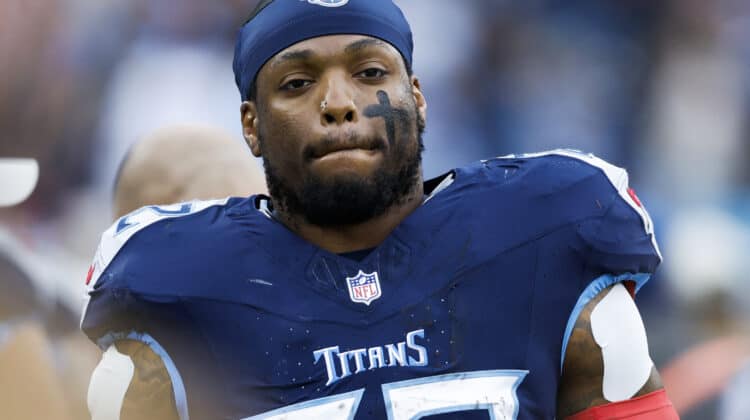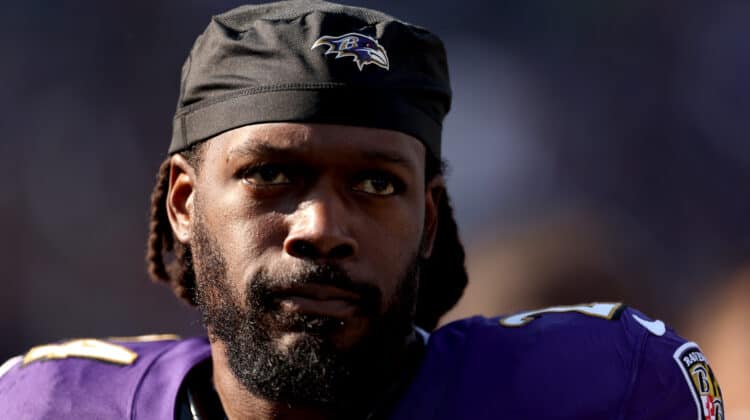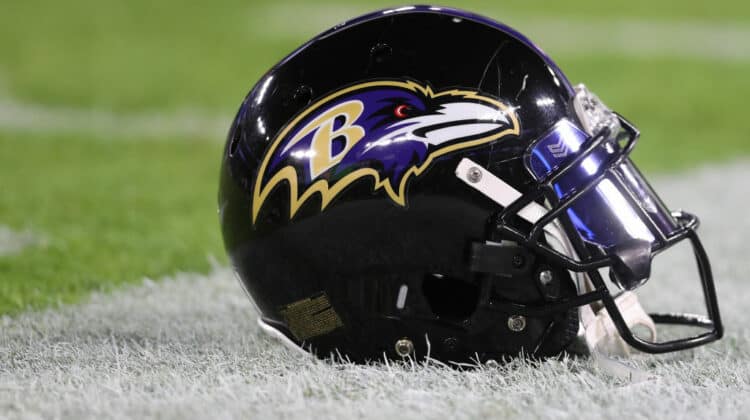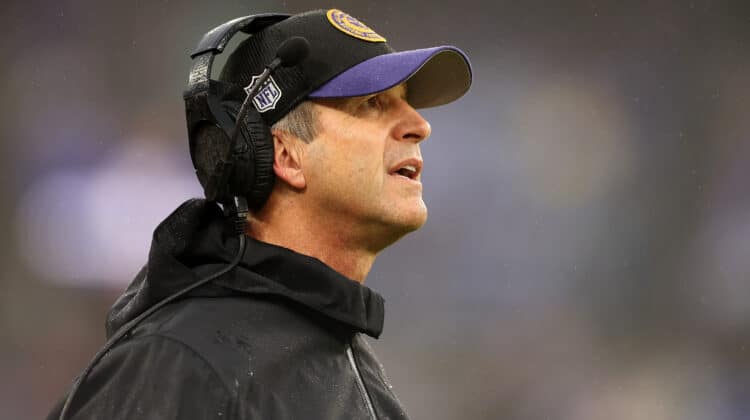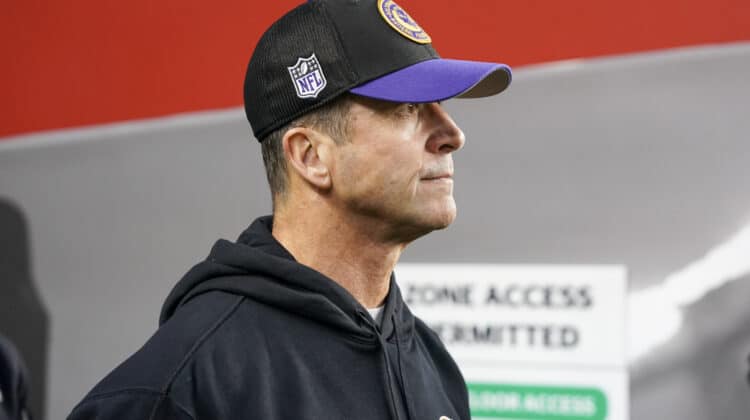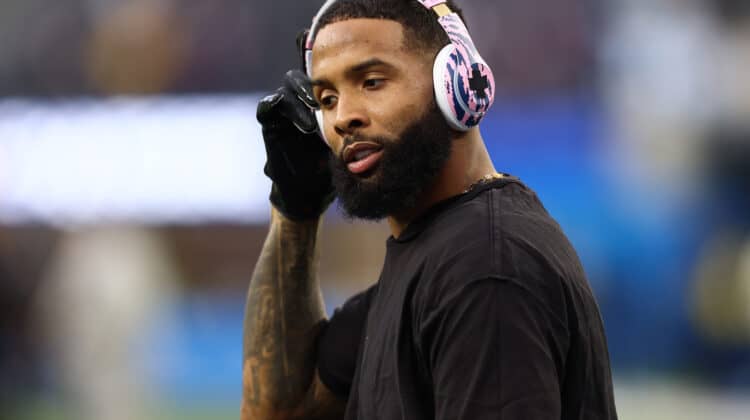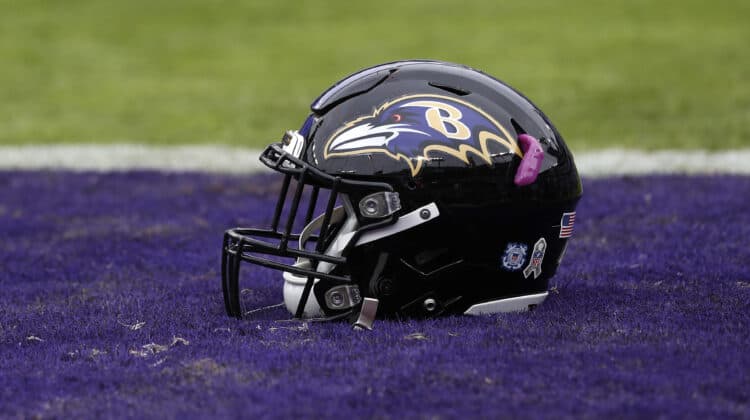
One of the most common sources of contention among sports fans is the use of analytics.
Ever since the Oakland A’s popularized “Moneyball” in the early 2000s, analytics have become embedded into the fabric of sports.
That has put fans into two specific groups.
The first group has bought into the use of analytics and swears by the discipline.
Group two is more old school and believes coaches just need to use gut instinct when needed.
When it comes to football, one of the most commonly debated uses of analytics is when to go for two points.
Should a coach’s decision to go for two prove successful, he looks like a genius.
If the gamble doesn’t pay off, however, the coach looks like John Harbaugh.
On Sunday, Harbaugh went for two at the end of the Baltimore Ravens game against Green Bay and the attempt failed.
Going for two and the win with no time on the clock and going for two with Aaron Rodgers having 42 seconds and a sense of urgency are two very different things.
— ProFootballTalk (@ProFootballTalk) December 20, 2021
It was the second time in three weeks that Harbaugh attempted a two-point conversion for a win and came up short.
Harbaugh’s Decision-Making Explained
On December 5, Baltimore lost their lead against the Steelers when Pittsburgh scored a touchdown with 1:48 remaining.
Pittsburgh further increased their lead when they added, you guessed it, a two-point conversion.
Not to be deterred, the Ravens stormed back and answered with a touchdown of their own with 12 seconds remaining.
Baltimore could have kicked a PAT to send the game into overtime.
Instead, Harbaugh went for two and the win.
They were nearly successful, but Lamar Jackson’s pass to tight end Mark Andrews fell incomplete.
This close! @Steelers win 20-19. #BALvsPIT pic.twitter.com/hlDVeGV2Rw
— NFL (@NFL) December 6, 2021
After the game, Harbaugh defended his decision by citing a lack of available cornerbacks.
“We were pretty much out of corners at that point in time,” he said.
On Sunday, the Ravens nearly erased a 14-point deficit to the Packers in the fourth quarter.
First, backup quarterback Tyler Huntley scored on a three-yard run with 4:47 remaining and Baltimore kicked a PAT to draw within seven.
After holding Green Bay on defense, Huntley scored a second time with 42 seconds remaining.
Once again, the Ravens could have kicked a PAT to send the game into overtime.
Yet, once again, Harbaugh decided to go for two.
Huntley’s pass attempt to Andrews fell short and Baltimore lost.
This time, Harbaugh was straightforward about his decision.
“We were just trying to get the win right there,” Harbaugh said.
Analytics Or Gut Check?
The decision when to go for two points has been analyzed ad nauseam.
However, among the coaching fraternity, when to go for two has been a strategy for decades.
Former NFL coach Dick Vermeil developed a chart for just such an occasion while coaching college ball in the 1970s.
According to Vermeil’s chart, Harbaugh should have gone for one.
Or, at the very least, go for two after Huntley’s score earlier in the quarter.
The error was not going for 2 down 8.
On the final decision, we had breakeven % at 51%, which means very slight lean toward PAT but can really go either way. Close enough that factors like injuries are worth considering.
Harbaugh did make a mistake. But it was on prior TD.
— Seth Walder (@SethWalder) December 20, 2021
In fact, Harbaugh said as much about that exact strategy a week ago.
Harbaugh is an aggressive coach and his players love him for it.
He has been known to use analytics from time to time, especially in certain game situations.
However, the choices he made in both games appeared to be gut decisions.
In the Pittsburgh game, Harbaugh implied that a lack of defensive personnel might have spelled doom in overtime.
After Sunday’s game, Harbaugh told the media that he went with his gut to win it.
This is correct. Harbaugh's decision to go for 2 and the win is NOT an analytics decision. I'm guessing he went with his gut and "my defense can't hold up in overtime." https://t.co/Xty00KgaWN
— Aaron Schatz 🏈 (@FO_ASchatz) December 20, 2021
Whatever his reasons, Harbaugh’s decisions have cost the Ravens two possible victories and the AFC North lead.
Not too long ago, Baltimore had a comfortable 8-3 record and first place in the AFC North.
They now sit behind the Bengals at 8-6.
It remains to be seen just how patient Ravens fans will be should Baltimore continue its slide.
NEXT: Ravens May Be Without Lamar Jackson In Week 15


